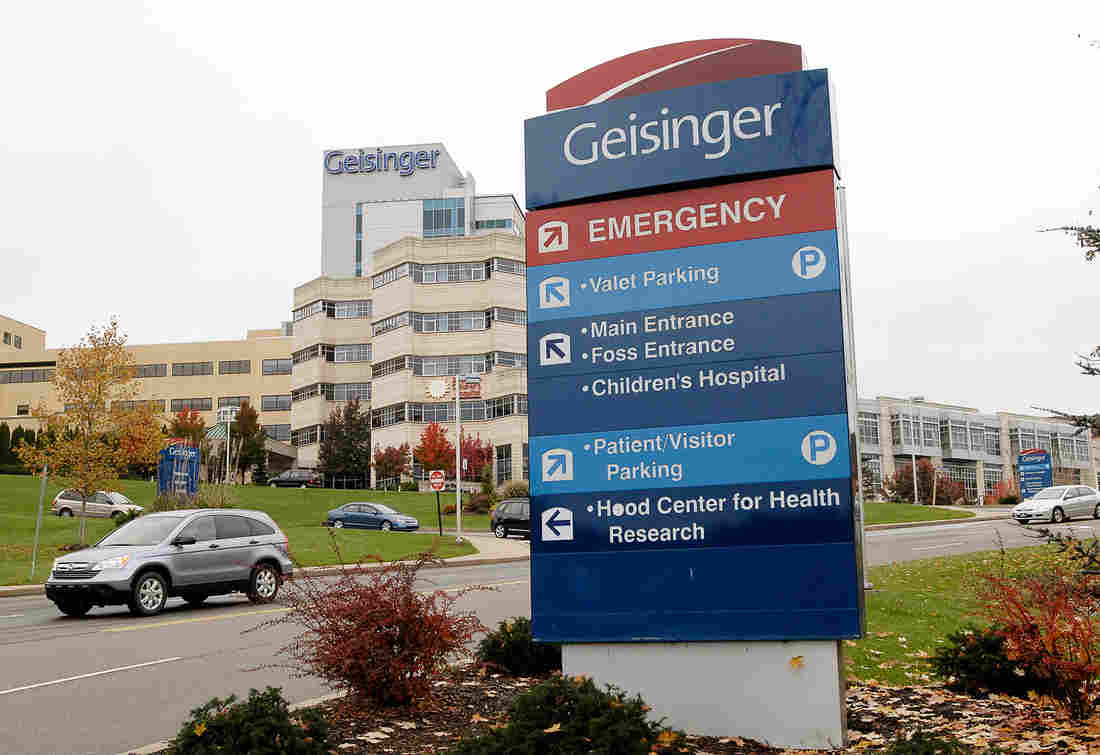Some Hospital Systems Want To Care For You And Sell You Insurance

Geisinger Health System, based in Danville, Pa., offers both insurance and patient care. Bradley C. Bower/Reuters/Landov hide caption
itoggle caption Bradley C. Bower/Reuters/Landov
In addition to treating what ails you, a number of health care systems aim to sell you health insurance to pay for it.
Some of the most competitively priced policies on health insurance marketplaces are offered by the providers of health care, but it remains to be seen how many health systems will succeed over the long haul as insurers.
It’s not surprising that health systems might get into the insurance business. Doing so funnels more patients to a health system’s hospitals and doctors. And it makes sense that combining clinical and claims data under one roof could lead to better coordinated, more cost-efficient patient care.
A number of well-regarded health systems have long sponsored insurance plans, including Kaiser Permanente, headquartered in Oakland, Calif., Geisinger Health System in central Pennsylvania and Intermountain Healthcare in Utah. (Kaiser Health News, an independent service of the nonprofit Kaiser Family Foundation, is not affiliated with the health insurance company Kaiser Permanente.)
Yet even though health care systems can gain insurance know-how by partnering with or acquiring an insurer or third-party administrator to handle claims, compliance and customer service, putting it all together can be challenging.
“They’re inexperienced,” says Gunjan Khanna, a partner in the health care practice at McKinsey & Co. who co-authored a paper on this type of plan, when talking about newer entrants in this market. “The viability of that business and the ability to manage that is a question.” For example, it may take years to develop the necessary skills in managing financial risk and coordinating patient care beyond the hospital or clinic, among other things.
Health plans sponsored by providers are still rare. In 2014, 13 percent of health care systems in the United States offered plans that covered 18 million members, or about 8 percent of all people with insurance, according to McKinsey. Most of the people covered by provider-led plans are in Medicaid managed care or Medicare Advantage plans.
A growing number of provider-led plans are available on the health insurance marketplaces. When the marketplaces opened in 2014, there were 64 provider-led plans; next year there will be 72, according to McKinsey. In 2016, 19 percent of the new carriers on the exchanges will be provider-led plans.
The provider-led marketplace plans are priced very competitively, says John Holahan, a fellow at the Urban Institute’s Health Policy Center. In a number of rating areas, the plans will be the lowest priced at the silver level in 2016, according to a forthcoming analysis of 63 rating regions in 21 states, Holahan says. The lowest priced silver plans include those sponsored by New York’s North Shore-LIJ Health System, Oregon’s Providence Health and Services and Inova Health System in Virginia.
Network coverage in these plans varies. Some cover only services within the health system, while others offer broader access.
Consumers have generally been willing to accept narrower networks of hospitals and doctors in exchange for lower premiums.
“The exchanges have pushed the concept of narrow networks front and center,” says Khanna. Consumers confronting that might want to “consider a provider health plan, because it’s based around a network of providers and at heart a network is built around a health care system.”
Kaiser Health News is an editorially independent news service supported by the nonpartisan Kaiser Family Foundation. Email questions: KHNHelp@KFF.org. Michelle Andrews is on Twitter: @mandrews110



